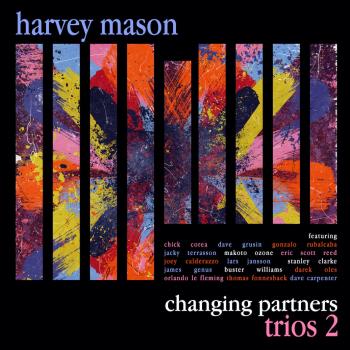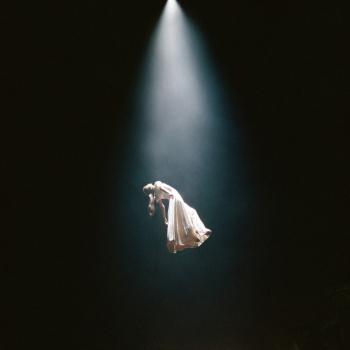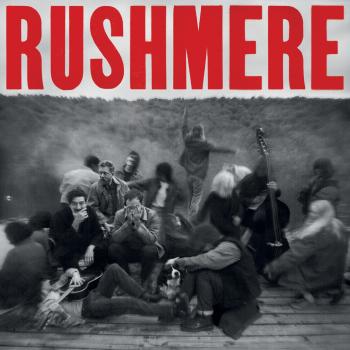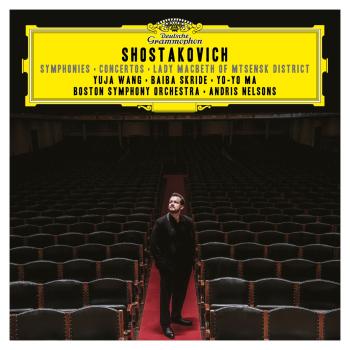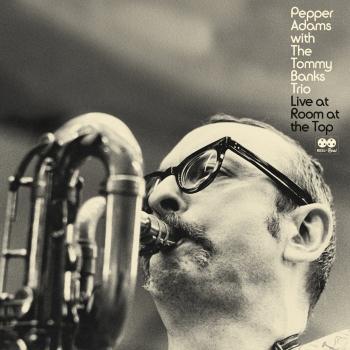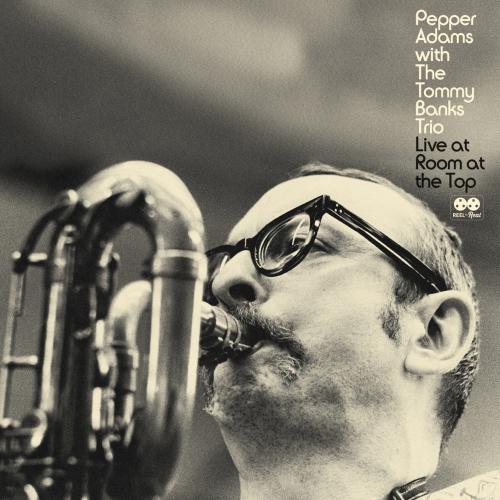
Live at the Room at the Top (Remastered) Pepper Adams
Album Info
Album Veröffentlichung:
2022
HRA-Veröffentlichung:
06.05.2022
Das Album enthält Albumcover
- 1 Three and One (Live) 17:54
- 2 Civilization and Its Discontents (Live) 17:41
- 3 Patrice (Live) 19:11
- 4 Oleo (Live) 19:08
- 5 Tis (Live) 02:36
- 6 Time On My Hands (Live) 17:55
- 7 Stella By Starlight (Live) 12:17
Info zu Live at the Room at the Top (Remastered)
Recorded live in Alberta, Canada, in late September, 1972, Live at Room at the Top hits a top spot. Brought to light by intrepid saxophonist Cory Weeds and his archival Reel to Reel label (part of his Cellar Music Group) Pepper powers his way to the front of the bandstand poised, muscular and insistent with a versatility born from instinct and endurance.
Like a lit fuse, Thad Jones inaugural burner "Three and One" finds Adams' smooth but boisterous horn instantly engaged, on one of those rare nights when the band was behind him, not vice versa. Adams then enchants all gathered with the first time play of his own stately meditation "Civilization and its Discontents," followed by "Patrice," a one-two shot that serve as the jumping romp on the setlist. "Patrice" wouldn't be recorded officially until a year later on the Tony Williams-produced Emphera (Spotlite Records, 1974).
Not a man to boast or regale himself (though in his later years he did become somewhat antagonistic at being pigeon-holed as a sideman), Adams' deserved to step out much more than he did, which gives Live at Room at the Top another very active plus in a full plus column. By the time pianist Tommy Banks, guitarist-turned-bassist-for-the-night Bobby Cairns and drummer Tom Doran have each ripped off big, ballsy, introductory solos of their own on "Three and One" the tables are bopping hard and happy in Alberta.
A cure-all course in bop ensemble, Live at Room at the Top is all great fun as the legendary Canadian trio cooks with a wild, structured abandon, as on Banks' mad cap comping on the fire breathing "Oleo" and Cairns' poppy solo and overall stealthy magnetism of "Time On My Hands," high points in a most joyful listening experience.
Pepper Adams, baritone saxophone
Tommy Banks, piano
Bobby Cairns, electric bass
Tom Doran, drums
Digitally remastered
Pepper Adams
[Park Frederick III] born Highland Park, MI, 8 Oct 1930; d Brooklyn, NY, 10 Sept 1986. Jazz baritone saxophonist and composer. Adams first learned music in the Rochester, New York public schools. Soon after moving to Detroit in 1947, he adopted the baritone as his sole instrument, allowing him to get gigs in the fiercely competitive Detroit music scene. After completing two years in the U.S. Army Band, Adams returned to Detroit in 1953, where he worked through 1955, with Tommy Flanagan, Barry Harris, Kenny Burrell, and Elvin Jones, in the house band at the Blue Bird and at Klein’s. Adams moved to New York City in January, 1956. In May, Oscar Pettiford recommended Adams to Stan Kenton, whose band Adams joined for six months, putting in motion a twenty year trajectory as a big band section player, though, ironically, Adams was arguably the most accomplished baritone soloist in jazz history. From 1957-1977, Adams was a member of the Maynard Ferguson, Benny Goodman, Quincy Jones, Lionel Hampton, and (for twelve years) Thad Jones-Mel Lewis big bands, though, whenever possible, Adams broke away to work in small ensembles, all the while highly in demand as a recording artist. Most notably, from 1958-1961 Adams co-led a quintet with Donald Byrd, and by the mid-’70s, he had worked with virtually everyone, including John Coltrane, Wes Montgomery, Thelonious Monk, Dizzy Gillespie, and Charles Mingus. In 1977, Adams left Thad Jones-Mel Lewis to travel the world as a soloist. During this time he wrote nearly half of his 43 compositions. Apart from his tunes, twenty albums as a leader, and 600 sessions as a sideman, Adams’ enduring legacy is how he elevated the baritone saxophone to the level of all other solo instruments. Adams’ blinding speed, penetrating timbre, immediately identifiable sound, harmonic ingenuity, precise articulation, confident time-feel, and use of melodic paraphrase, often for comedic effect, make him one of jazz’s great Post-War stylists, a model to which all current baritone saxophonists aspire.
Dieses Album enthält kein Booklet



